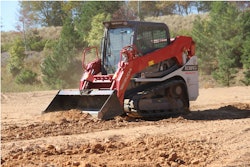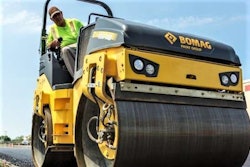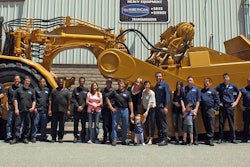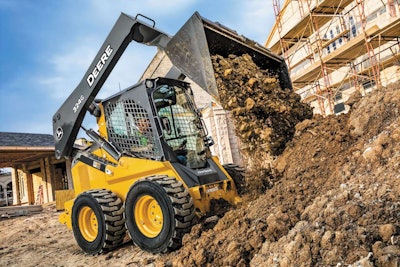
Deere & Company reported that global net sales and revenues increased 32 percent, to $10.308 billion, during the third quarter of 2018.
In both construction and farm equipment sales, Deere says it’s reaping benefits of a strong economy and housing demand, farmers who are continuing to buy equipment despite uncertainty involving tariffs, and the acquisition of Wirtgen.
Net sales from equipment operations alone rose above $9.2 billion, a 36-percent increase.
For the full year, Deere’s construction and forestry sales alone are now forecast to be up about 81 percent in 2018 as a result of stronger demand for equipment as well as the acquisition of Wirtgen, the company says.
“In agricultural markets, replacement demand continues to drive sales activity for large equipment, while construction equipment sales benefited from increased investment in oil and gas, housing and global transportation,” according to Brent Norwood, manager of Deere investor communications.
Norwood notes:
- For the first nine months of 2018, net sales and revenue climbed 29 percent, to $27.942 billion, compared to the same period a year ago.
- Net sales of equipment operations were $9.286 billion for the third quarter, compared with $6.833 billion a year earlier.
- Equipment operations net sales rose to $25 billion for the first nine months, compared to $18.8 billion for the same period last year.
Industry sales in the U.S. and Canada are forecast to be up about 10 percent for the year, says John May, president of Agricultural Solutions and chief information officer.
“For 2018, results have been largely driven by replacement demand as customers cite the need to update their aged fleets and show a strong preference for greater productivity enabled to the latest technology,” May explained in a conference call on the earnings report Friday.
“Even as trade issues have weighed on farmer sentiment more recently, we have still seen replacement demand reflected in the Phase 1 results of our 2019 planter and sprayer early order programs, which both ended slightly higher than last year’s Phase 1 results,” he continues.
“And while it’s still too early to draw from firm conclusions regarding overall 2019 ag demand, it is noteworthy to highlight the early order programs, higher take rates of advanced precision features, which clearly demonstrates the economic benefits of our solutions and supports the growth of our precision ag strategy.”
Deere’s precision ag business includes precision hardware, telematics digital solutions and customer support.
A backlog of equipment orders
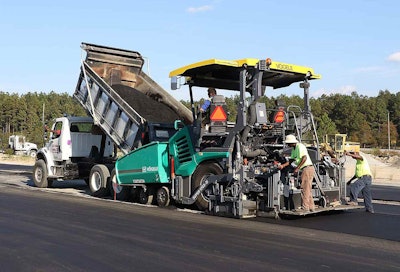 Wirtgen machines will soon go away from three Komatsu-owed U.S. dealers.
Wirtgen machines will soon go away from three Komatsu-owed U.S. dealers.Deere continues to see its order book extend and is now well into 2019. Customer demand – contractors with backlogs – are stoking this.
Drilling down on details of construction and forestry earnings, Norwood says net sales in those areas for the quarter, up by $2.99 billion, climbed 100 percent compared with last year.
He points to both strong demand for construction and forestry equipment (C&F) as well as well as by the acquisition of Wirtgen, which contributed 77 percent of the positive improvement.
“Third quarter operating profit was $281 million benefiting from higher shipment volumes, Wirtgen acquisition and lower warranty expense partially offset by higher production cost and higher sales incentive expenses. C&F operating margins were 9.4 percent for the quarter, but 10.5 percent excluding Wirtgen,” Norwood says.
More details on 3Q earnings
Deere reports net income of $910.3 million for the third quarter or $2.78 per share, compared with net income of $641.8 million, or $1.97 per share, for the quarter ended July 30, 2017.
For the first nine months of the year, net income was $1.584 billion, or $4.82 per share, compared with $1.649 billion, or $5.11 per share, for the same period last year.
Deere officials also detailed benefits of tax reform passed last December. The results for the quarter included a favorable net adjustment to provisional income taxes of $62 million.
But the first nine months, however, reflected an unfavorable net provisional income tax expense of $741 million.
Without these adjustments, net income attributable to Deere for the third quarter and first nine months of the year would have been $849 million, or $2.59 per share, and $2.325 billion, or $7.08 per share, respectively, the company says.
While global net sales and revenues increased 32 percent, to $10.308 billion, for the third quarter, they rose 29 percent, to $27.942 billion, for the first nine months of 2018.
Outlook: Indicators show rising demand continues into 2019
With a vibrant economic environment for the construction, forestry and road-building industries continue to support increased demand for new and used equipment.
Deere’s full-year outlook now calls for net sales to be up about 30 percent which includes about one point of price realization and 12 points for the acquisition of Wirtgen.
The full-year 2018 GAAP net income forecast is now about $2.36 billion. That includes charges of $741 million resulting from tax reform related net deferred tax asset re-measurement and deemed earnings repatriation. Excluding the impact of these items, adjusted net income is forecast to be about $3.1 billion.
“For the year, U.S. GDP is forecast to grow at about 3 percent, which is above the 20-year average,” Norwood notes. “Correspondingly, U.S. housing demand remains solid with housing starts expected to be about 1.3 million units for 2018 as inventories of new and existing homes available-for-sale remain at 36-year lows.
“Residential construction continues to serve as an important indicator for earthmoving equipment sales and current housing demand levels suggest continued growth in the segment,” he continues.
“Additionally, construction investment in the U.S. is forecast to grow 3.8 percent for the year led largely by increased activity in oil and gas. With oil prices now forecast to average about $67 a barrel for the year, backlogs for many oilfield contractors are extending through 2019, which is supported for further equipment demand.”
Norwood says global transportation investment this year is forecast to grow about 6 percent, which will drive increased demand for road construction equipment, such as milling machines, rollers and asphalt pavers, which are all important product lines for Wirtgen. These positive economic indicators are reflected in a strong order book, which is now extending well into 2019.
Chief Financial Officer Raj Kalathur says while it’s still too early to form a complete outlook for 2019, Deere believes the continued ag equipment demand affirms both a significant investment in precision ag and Deere’s overall current strategy.
Secondly, Kalathur says, “the solid levels of demand we are experiencing across our two equipment divisions have produced excellent cash flow generation year-to-date. As a result, we contributed $1 billion towards our pension during the third quarter in order to take advantage of last year’s higher corporate tax rate.
Deere has announced a 15-percent increase to our quarterly dividend to 69 cents per share on May 30 as the company moves toward the desired dividend payout ratio that targets 25 percent to 35 percent of mid-cycle earnings.
Earlier this month, Deere repurchased $400 million worth of shares.
“These actions reflect confidence in our ability to deliver results even in fluctuating market conditions,” Kalathur says.




